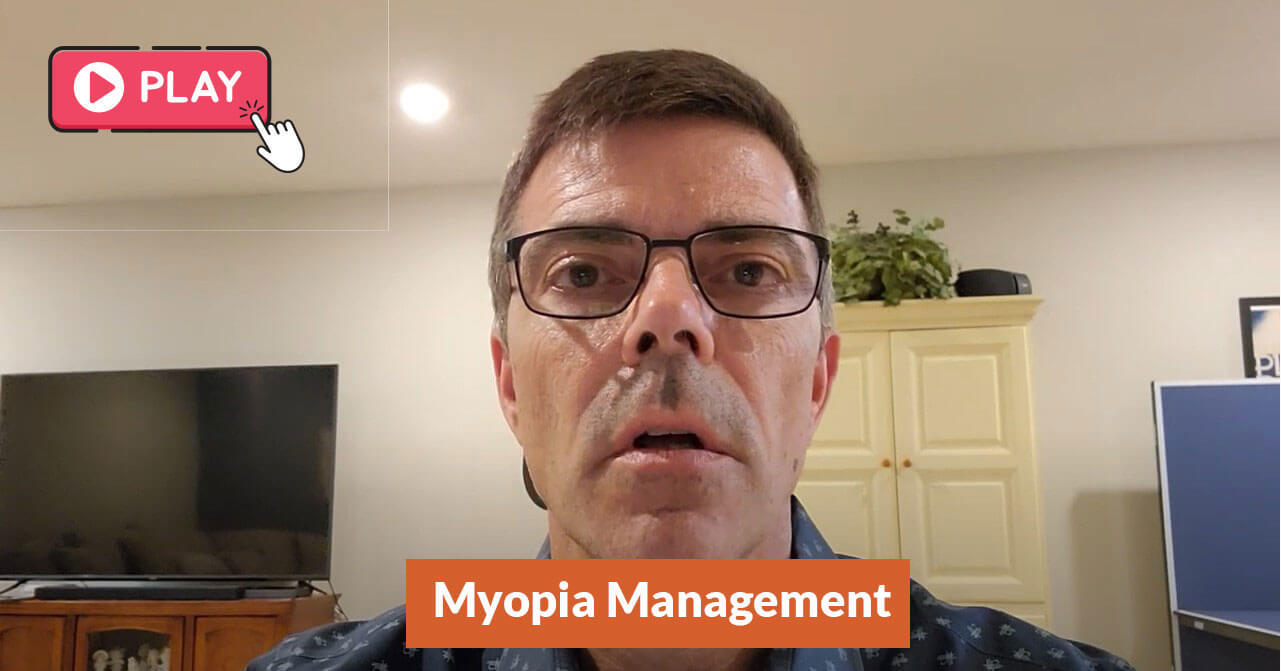Myopia, or nearsightedness, is a common refractive condition, making distance vision blurry for those who have it. Affected are about 100 million people in the United States (That’s over 30% of the general population). In parts of Asia, that rate rises to between 60 -80% of young adults. Worldwide, it affects up to 2.5 BILLION people. In 2050, it’s projected to affect 5 billion - 50% of the world. It’s safe to say that myopia is an epidemic, especially in developed societies.
Traditionally, myopia has been corrected with eyeglasses and contact lenses. Both of these methods are safe and effective to clear-up someone’s vision but do little in preventing the progression of myopia. As myopia worsens each year (or sooner), the strength of the glasses or contact lenses would increase. These are known as prescription increases, and if you are reading this, you are probably well aware of them.
As optometrists, we are frequently asked by concerned parents if there’s anything that can be done to help prevent these annual prescription increases. For years, the answer has been a reluctant “no”, stating that genetics plays the dominant role in myopia progression. That is, if one or both parents are myopic, the child is often doomed to follow. But what eye doctors have found, interestingly, is that many children nowadays are becoming nearsighted when both parents have good vision. We also see children becoming much more nearsighted than their parents, and/or starting their myopic journey at a much younger age.
Science has borne out that myopia is mainly caused by two factors: genetic and environmental. The genetic part simply means, that if a parent has myopia, your risk of developing it is greater. Unfortunately, we don’t know how to change that … yet. The environmental part has to do with how you use your eyes. We know that myopia is greater in those who read earlier and read more, spent significant time with computers and electronic devices, attain higher education, live in more urban environments, and spend fewer hours outdoors.
So, besides the inconvenience and cost of a lifetime of eyeglasses and contact lenses, why do we really want to prevent myopia from progressing? Mainly, people who have higher degrees of myopia have increased the risk of retinal detachments, myopic macular degeneration, glaucoma, and cataracts. These are potentially blinding diseases. In fact, the World Health Organization’s Global Initiative for the Elimination of Avoidable Blindness has identified myopia as an immediate priority.
Due to its prevalence and increasing rates, there is a lot of interest and research in reducing or controlling the rate at which myopia progresses. Let us first state that if there was one foolproof universally accepted remedy for myopia, we would all be practicing it. There is not. However, there are several methods that have scientific studies to support them, that show good results for many people.
What everyone can do to help slow myopia down
There are measures that can be taken by everyone to keep trying to reduce myopia and in general and promote a good life balance:
- Encourage children to play outdoors. Far too much time is being spent indoors - studies have shown that about 45 minutes of outdoor activity is beneficial. We don’t know if the benefit is the natural sunlight or looking at longer distances, we just know that it’s helpful.
- Cut down screen time. This includes mobile phones, tablets, and computer screens. Discourage toddlers from entertaining themselves with e-technology. The American Academy of Pediatrics recommends ZERO screen time prior to age 2. Technology is not going away, so try to limit screen time (aside from schoolwork) to a reasonable amount, maybe an hour per day, but realize limits may need to be adjusted based on age and needs.
- Give yourself a break. When on screen, take an eye break and look more than 20 feet away every 20 minutes for 20 seconds. Think 20/20/20.
- Give yourself some space. Keep some distance between your eyes and the screen. An arm’s length is about right. No screens in the face!
What we can do to help slow myopia down
Aside from the above measures, we will try to slow the progression of myopia using methods that require close supervision and monitoring. Following are accepted methods of controlling myopia, based on studies. Remember, no method is 100% effective for everyone and some methods are better than others based on several factors. At Allied Vision Services of Plainsboro, we can recommend and offer:
- Extended depth-of-focus multifocal contact lenses
These lenses reduce one of the stimuli of myopia progression, relative peripheral hyperopic defocus of the retina. Again, the doctor will provide ongoing care in order to ensure clear comfortable vision while minimizing any myopic increase. This method can reduce the progression of myopia by 50% or more. That’s a significant amount, especially when you consider that children’s eyes change for many years, even into adulthood. - Dilute Atropine eyedrops
Atropine is a medicine that has been used in eye care for years, most commonly to dilate pupils and to treat eye inflammation. It has more recently been found to slow myopia. Drops are used once daily in the evening, and since they are dilute, usually have minimal to no side effects. The doctor will provide ongoing care to balance the dosing, effectivity and side effects. - Combination of 1 and 2.
Sometimes, if one method is not as effective as planned, both the contact lenses and the dilute atropine will be used. - Multifocal (MF) eyeglasses
For patients who contact lenses are not suitable or possible and display esophoria/convergence excess or accommodative lag, MF eyeglasses have been shown to reduce myopic progression by about 33%. - Orthokeratology or “CRT”
This method uses specially designed rigid gas permeable contact lenses that are worn while sleeping. They too reduce the relative hyperopic defocus. If suitable, we will recommend an excellent group to consult with. - MiSight 1 day contact lenses
Ask us about this newly FDA-approved solution for your child's myopia progression!
Give us a call to schedule a consultation so we can evaluate and help you decide which treatment plan is right for you or your child.
Allied Vision Services of Plainsboro
10 Schalks Crossing Road
Plainsboro, New Jersey 08536
609-275-8989
www.alliedvisionservices.com


